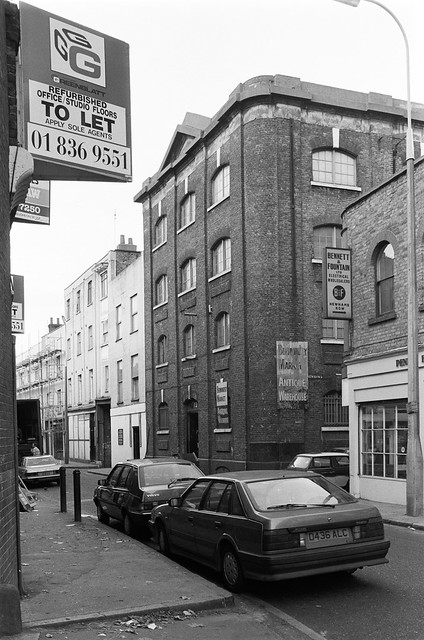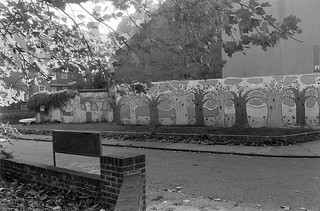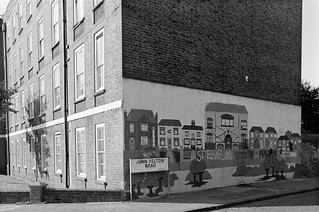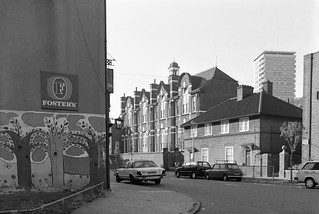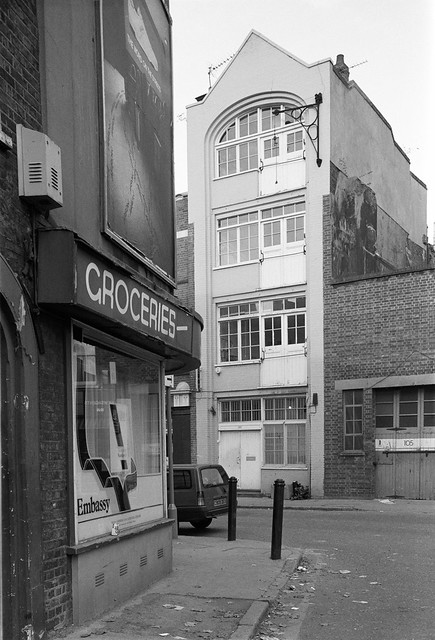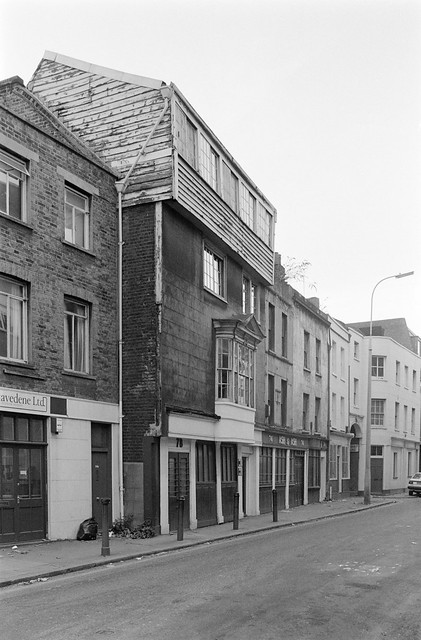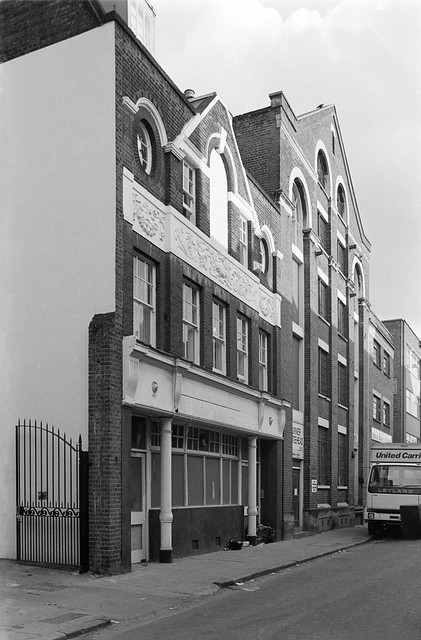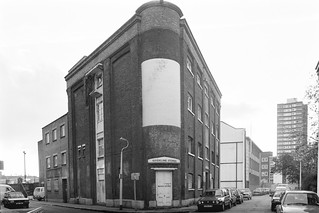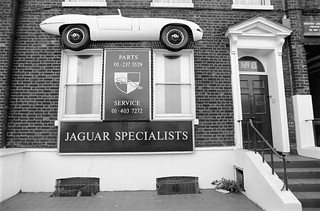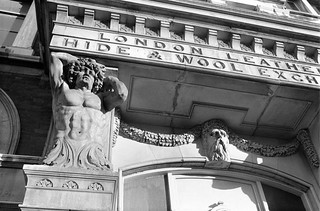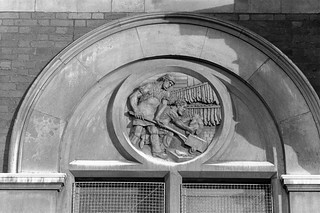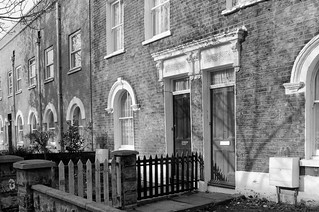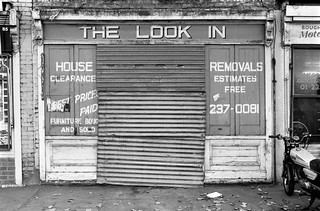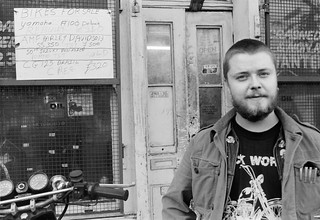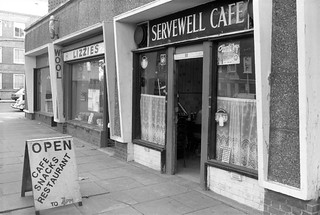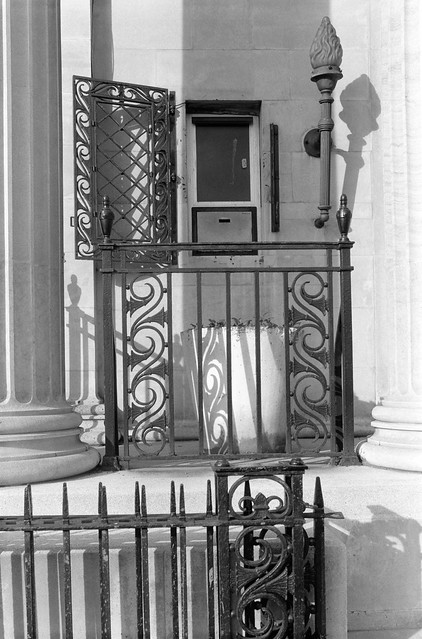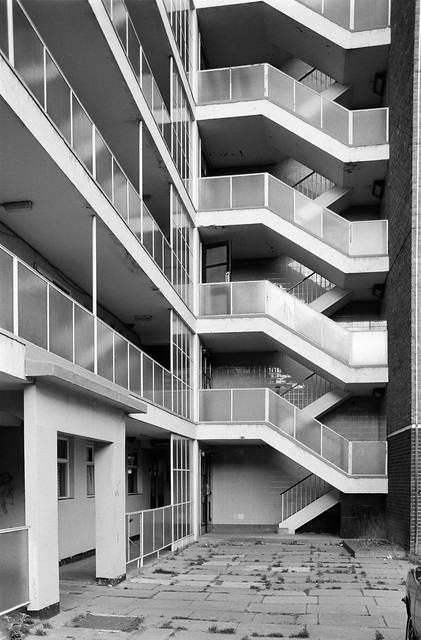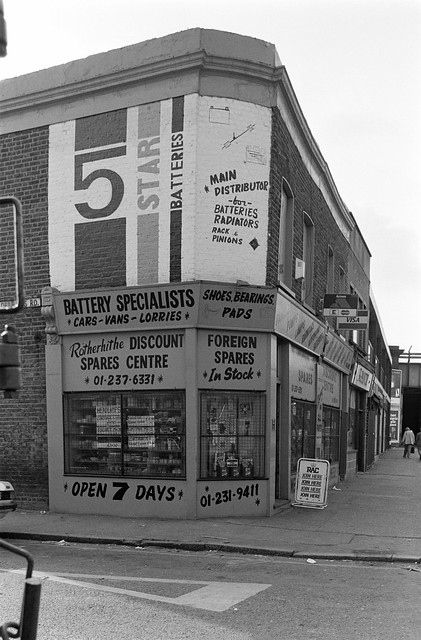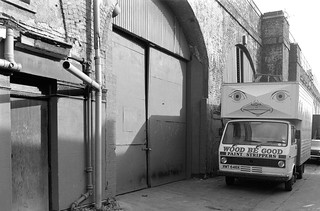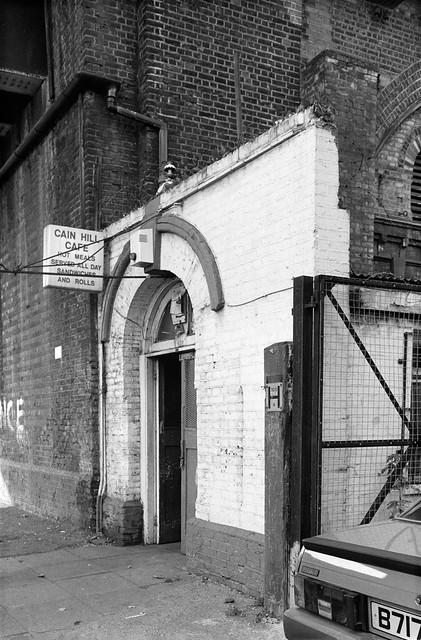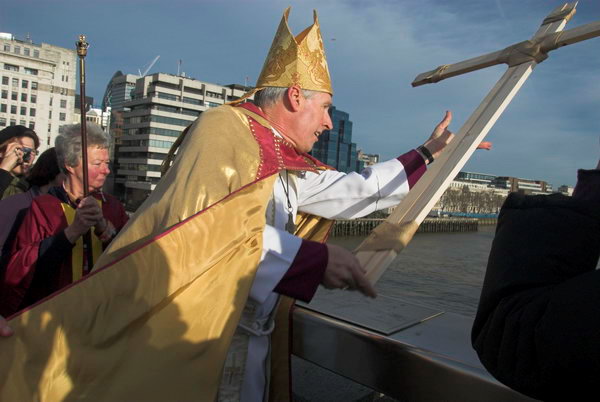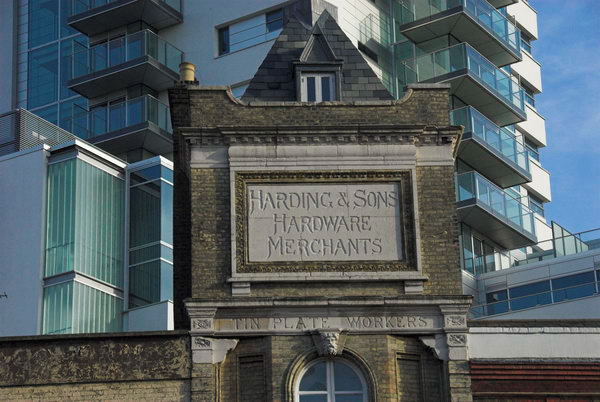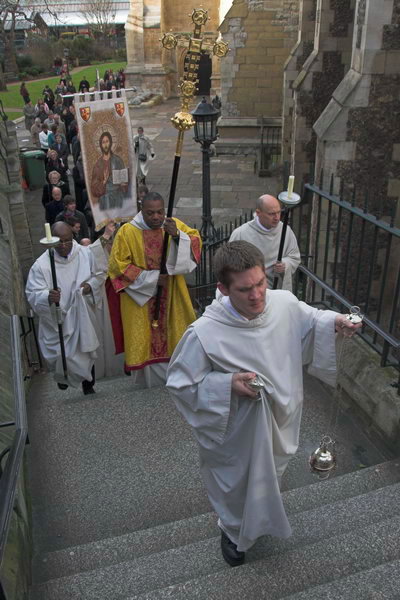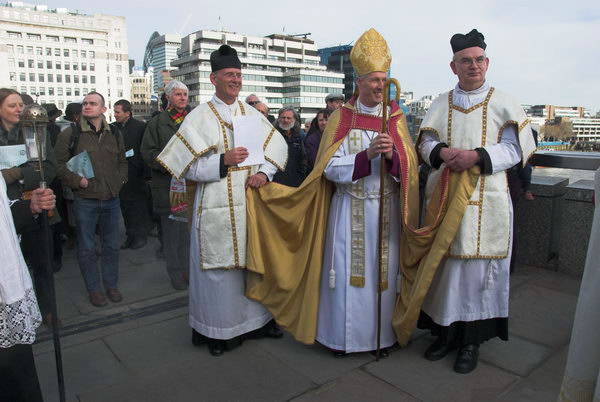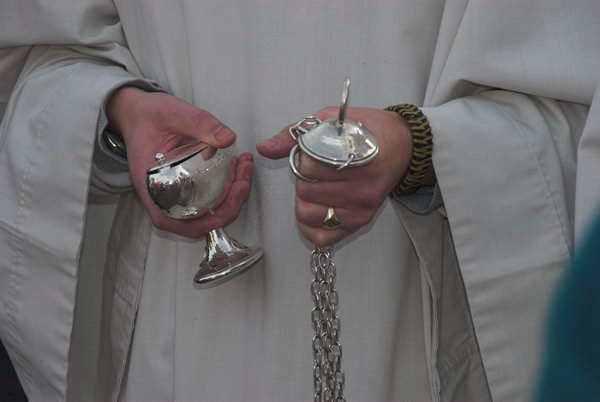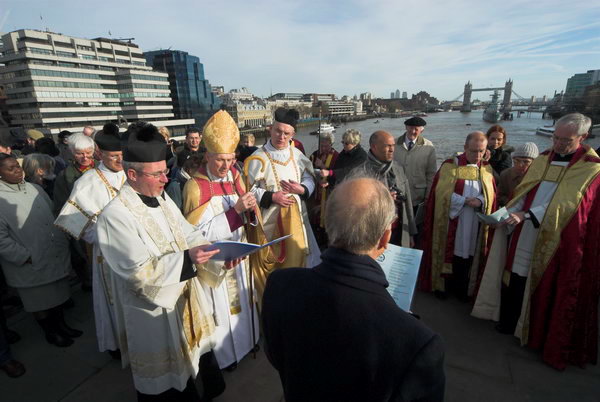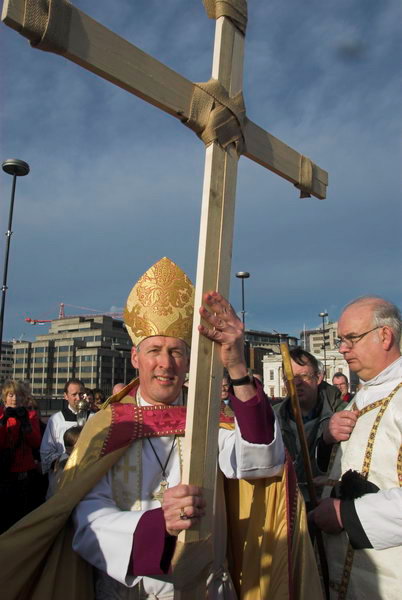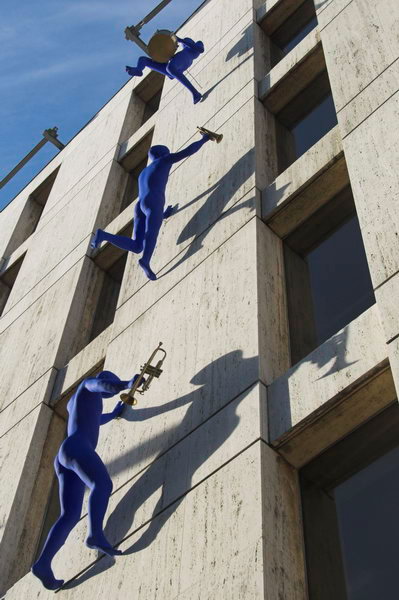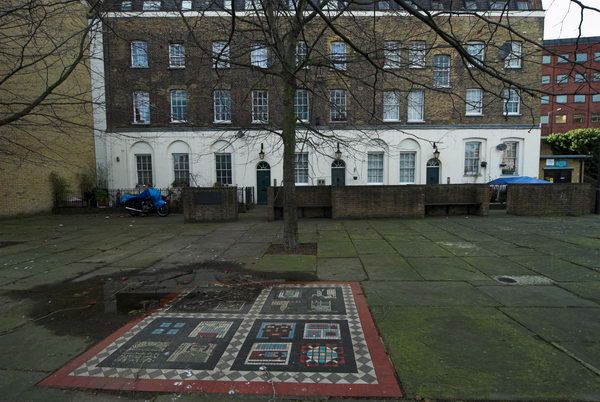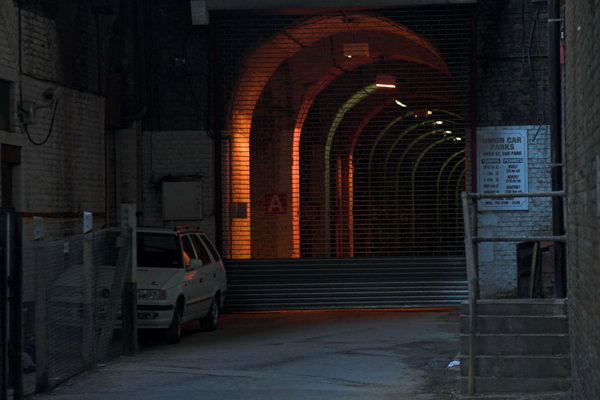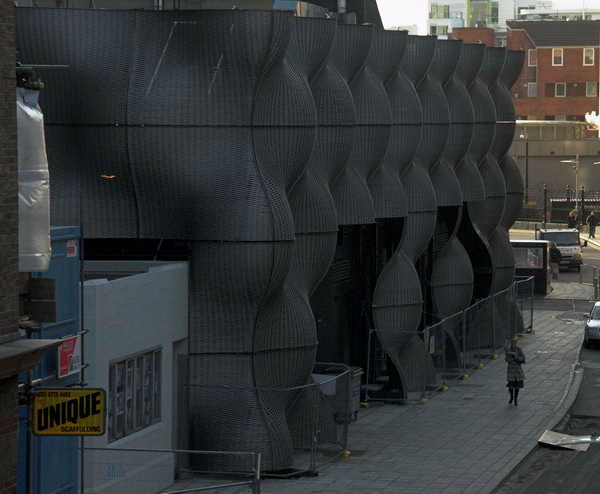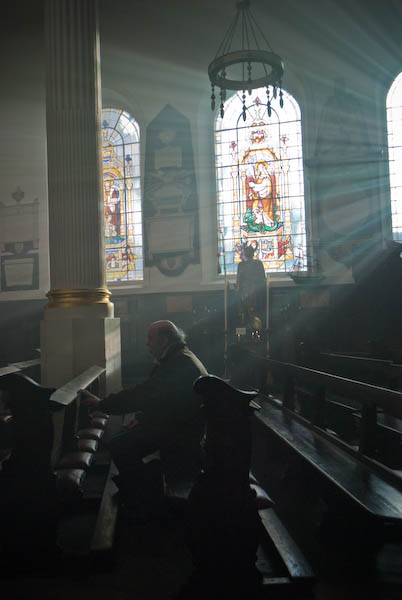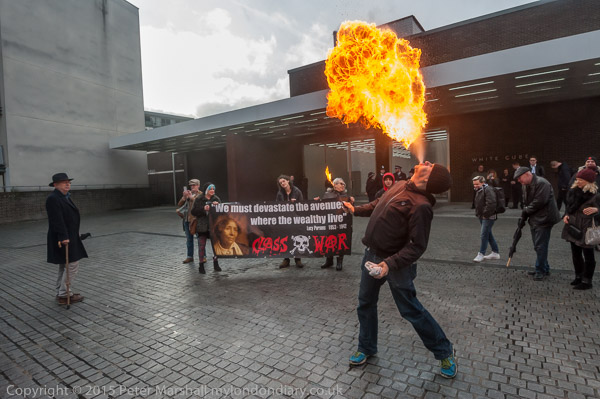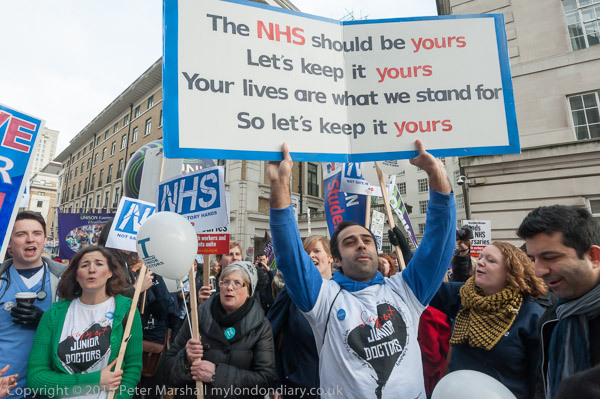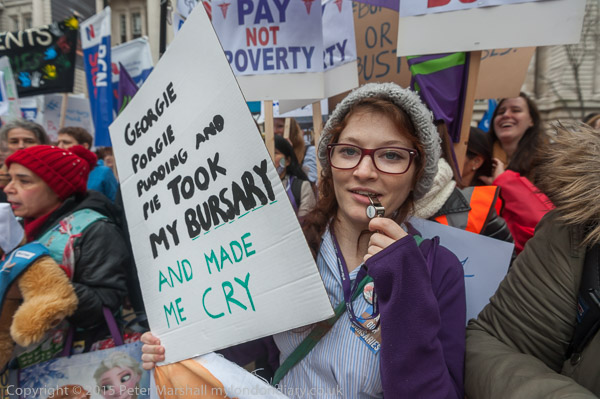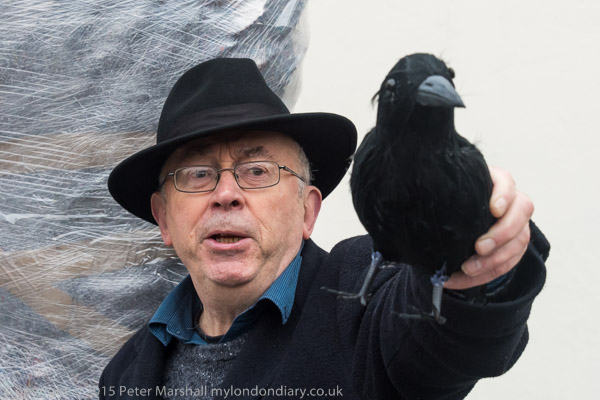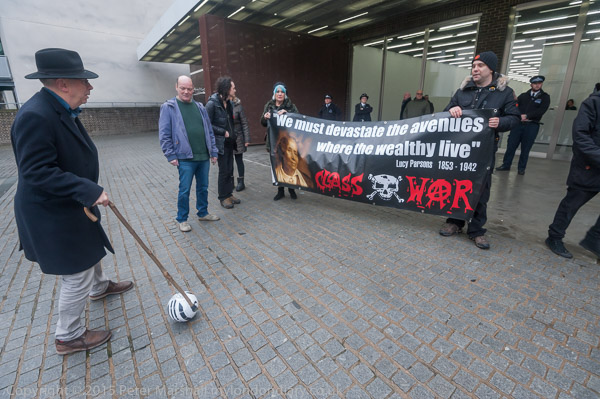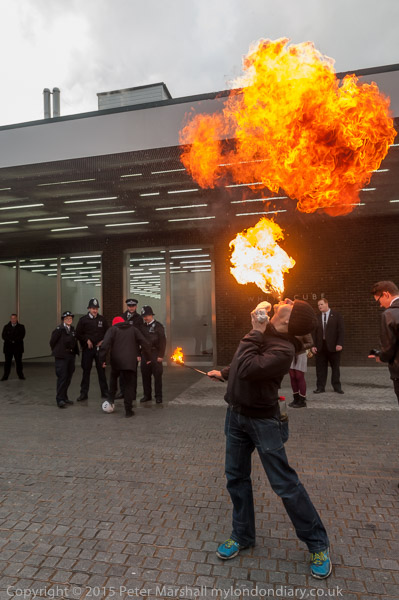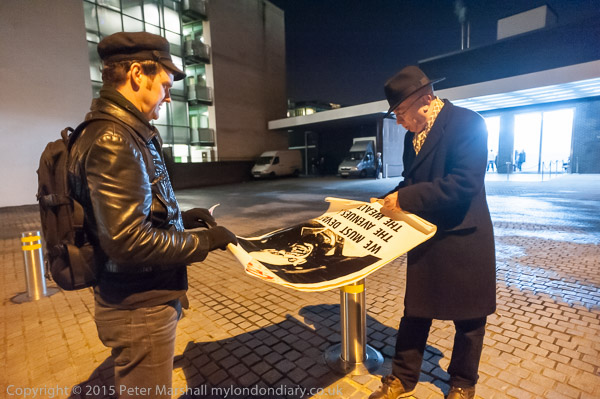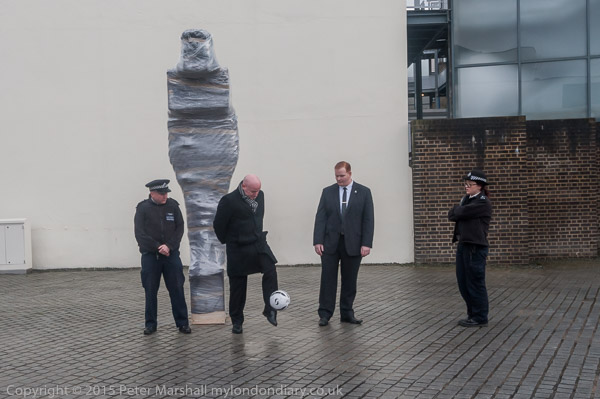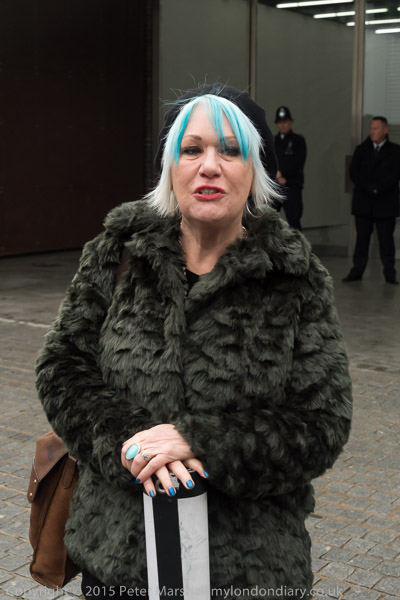The previous episode of this walk was Bermondsey Street & Guideline Stores, 1988, and the first two pictures complete my post on that. Two days later I began a new walk a little to the north in Bermondsey.
Rubber, Antiques, Murals & A Martyr 1988
This row of frontages, rather tidied up, is still present on Bermondsey St, though I think there may have been considerable changes behind the facades. That at the right of my picture, then No 151 was a part of A E Bickel and Co Ltd, offering ENGINEERS TOOLS AND EQUIPMENT, INDUSTRIAL RUBBER GOODS and MANUFACTURERS OF INDUSTRIAL LEATHER AND CANVAS GOODS. This private limited company is still in business but describes this at Companies House as ‘Buying and selling of own real estate’ and there is a large development, Bickel’s Yard, with a private courtyard to the east of Bermondsey St along the north side of Bell Yard Mews.
At the centre of the picture on the corner of Newham’s St is Bermondsey Market Antiques Warehouse, in a Grade II listed early 19th century cloth factory, described as “Brown brick with stone Tuscan cornice and pediment. The building now houses a pan-Asian cocktail bar and grill. You can see from the signs at the left edge of the picture that a great deal of gentrification was in progress back in 1988.
My walk had ended at the south end of Bermondsey St, where I took a bus towards Waterloo, but two days later I was back in Bermondsey, this time getting of a bus on Jamaica Road and walking northe up George Row. Google Maps does not include John Felton Road, which was a short street running east from George Row and has been renamed Sugar Lane. This wall with a mural around some temporary open space has long disappeared with new building, but it is hard to know why Bermondsey has lost a reference to a man who stood up for his Catholic faith and paid dearly.
Catholic martyr John Felton was given a cruel execution for fixing a copy of Pope Pius V’s Bull ‘Regnans in Excelsis’ excommunicating Queen Elizabeth, to the gates of the Bishop of London’s palace near St. Paul’s. Felton’s family came from Norfolk but he lived at Bermondsey Abbey. His action was seen as a great threat to the Queen continuing to reign, an act of High Treason.
After being arrested and taken to the Tower of London he spoke of his glory in having made the Bull public, and took the diamond ring from his finger and sent it to Elizabeth to show he bore her no personal malice, but insisted she was a Pretender with no right to the throne.
He was tortured on the rack but refused to falsely implicate the Spanish Ambassador in his actions and four days later was drawn on a hurdle to St Paul’s Churchyard where he was hung briefly before being cut down alive for quartering. His daughter’s account of the event alleges that after the hangman had pulled out the heart from his body and was holding it alive he managed once or twice to utter the holy name of Jesus. His severed head and body parts were ‘carried to Newgate to be parboiled, and so set up, as the other rebels were’ as a warning to others. He was beatified in 1886 by Pope Leo XIII.
Felton had been a man of considerable wealth, and his wife had been childhood friends with Queen Elizabeth and a maid of honour to Queen Mary. As well as the diamond rign, said to be worth £400, his plate and jewels, valued at £33,000 were seized for the queen.
This long block of council flats on the Dickens Estate is Oliver House, now at the corner of Sugar Lane and East Lane, though there is no longer a mural on the wall as it was painted over around 2010. It was no great work of art and had faded badly but it seems a pity it has not been replace by something more colourful than a blank brown wall.
The Fosters pub on George Row was The George at 19 George Row, on that site since at least 1824. Still open in 1988 on the corner of George Row and John Felton Rd and Flockton Street it closed in 2001 was demolished in 2003.
St Joseph’s RC Primary School remains in use. The Convent of the Sisters of Mercy in Bermondsey was established around 1838 to serve the growing Irish Catholic population in the area and they set up a primary school in the area. Later they educated older children too. St Joseph’s was completed in 1913, and served for years as an All Age Mixed RC School. Catholic education in the area was reorganised in 1949 and it then became St Joseph’s RC Primary School. It now has some extensive new buildings as well as the old school.
The building on my right is Fleming House on George Row, part of Bermondsey Council’s Dickens Estate. At the centre of the picture is the fine warehouse still on the corner of Jacob Street, and at left the seven floors of Peter Butler House, built for Bermondsey Council in the mid-1950s as a later addition to the Dickens estate.
This walk will continue in a later post.

